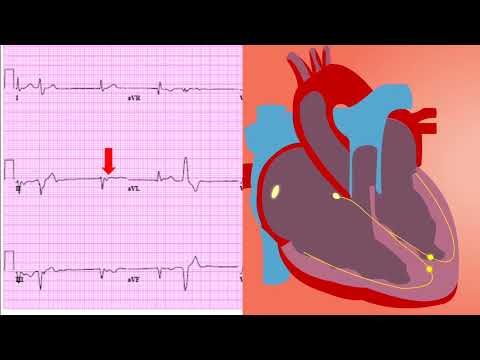🎬 Video Summary
In this informative video from @ecgkid, explore the significant effects of hyperkalemia (high blood potassium) on the heart. Gain a comprehensive understanding of how elevated potassium levels disrupt normal cardiac function, leading to potentially life-threatening arrhythmias and other complications. Learn to recognize the ECG changes associated with hyperkalemia and understand the importance of prompt diagnosis and management. This video is a vital resource for medical professionals and students seeking to deepen their knowledge of hyperkalemia and its impact on cardiovascular health.
🧠Teaching Perls
- Hyperkalemia significantly impacts the heart’s electrical activity, leading to characteristic ECG changes.
- Elevated potassium levels can disrupt the normal cardiac conduction pathway, predisposing individuals to arrhythmias.
- Understanding the relationship between potassium levels and ECG abnormalities is crucial for accurate diagnosis.
- Prompt identification and treatment of hyperkalemia are essential to prevent life-threatening cardiac complications.
- Medical professionals and students can enhance their knowledge of electrolyte imbalances and their cardiac consequences through this video.
❓ Frequently Asked Questions
Q: What are the early ECG changes seen in hyperkalemia?
A: Early ECG signs of hyperkalemia often include peaked T waves, particularly in the precordial leads (V1-V6). As potassium levels rise, the PR interval may prolong, and the QRS complex may widen.
Q: How does hyperkalemia cause cardiac arrhythmias?
A: Hyperkalemia affects the resting membrane potential of cardiac cells, making them more excitable initially and then less excitable as potassium levels further increase. This can lead to irregular heart rhythms and, in severe cases, cardiac arrest.
Q: What is the normal range for blood potassium levels?
A: The normal range for blood potassium levels is typically between 3.5 and 5.0 milliequivalents per liter (mEq/L). Levels above 5.5 mEq/L are generally considered hyperkalemia.
Q: What are the treatment options for hyperkalemia?
A: Treatment for hyperkalemia can include calcium gluconate to stabilize the cardiac membrane, insulin and glucose to shift potassium into cells, diuretics or potassium binders to remove potassium from the body, and, in severe cases, dialysis.
Q: Can certain medications cause hyperkalemia?
A: Yes, several medications can increase the risk of hyperkalemia, including ACE inhibitors, ARBs, potassium-sparing diuretics, and NSAIDs. It’s important to monitor potassium levels in patients taking these medications, especially those with kidney disease.
Q: What are the symptoms of hyperkalemia?
A: Symptoms of hyperkalemia can be non-specific but may include muscle weakness, fatigue, nausea, and cardiac arrhythmias. In some cases, hyperkalemia can be asymptomatic, emphasizing the importance of regular blood tests in at-risk individuals.
🧠 Key Takeaways
- 💡 Hyperkalemia, or high blood potassium, has a profound impact on heart function.
- 💡 Recognize the characteristic ECG changes associated with varying degrees of hyperkalemia.
- 💡 Understand the mechanisms by which hyperkalemia disrupts cardiac electrical activity.
- 💡 Learn about the different treatment options available to manage hyperkalemia and prevent life-threatening complications.
- 💡 Appreciate the importance of monitoring potassium levels in at-risk patients, especially those with kidney disease or taking certain medications.
🔍 SEO Keywords
Hyperkalemia ECG, High blood potassium heart, Potassium and heart rhythm, ECG changes in hyperkalemia, Hyperkalemia treatment, Cardiac effects of hyperkalemia, Electrolyte imbalance cardiac.
“`

